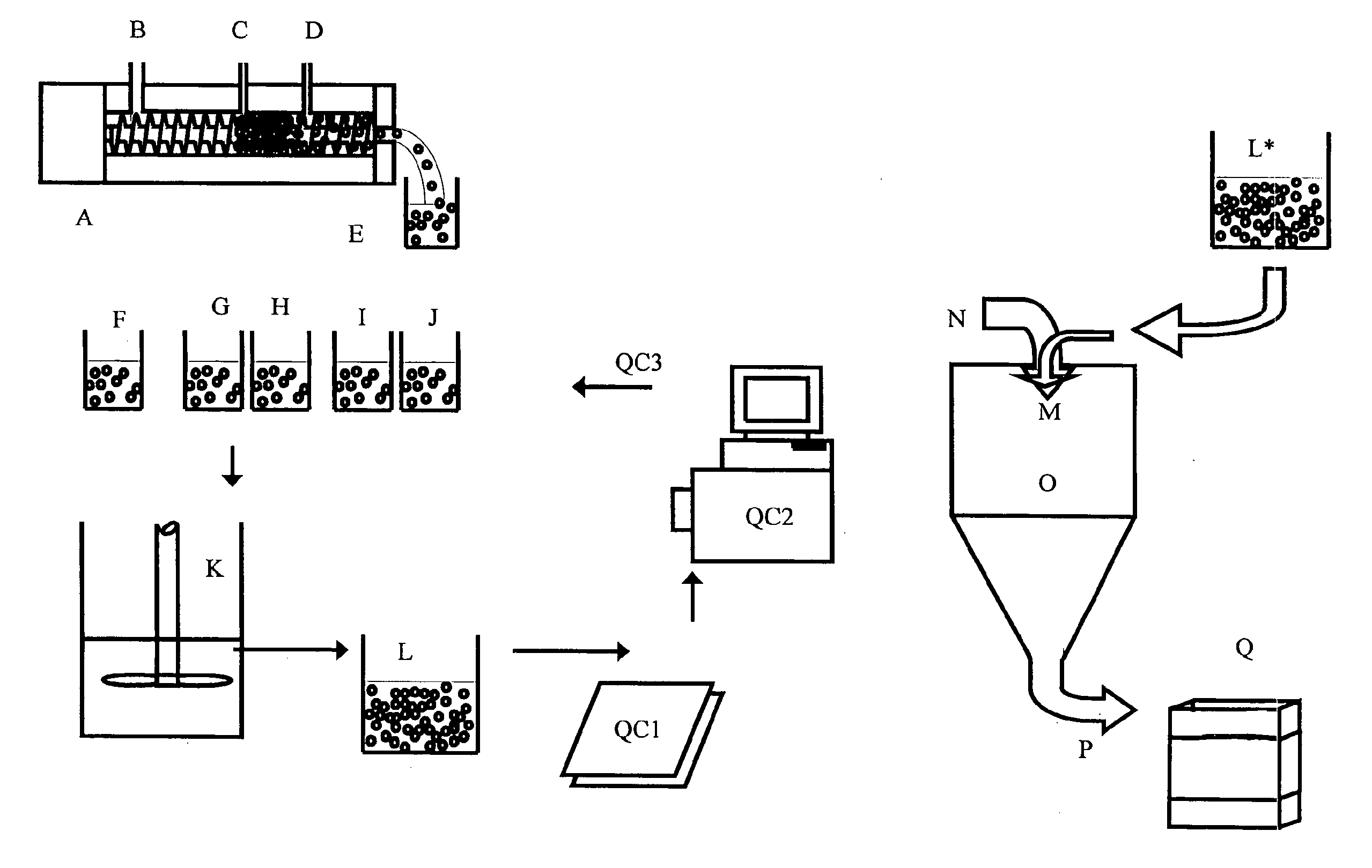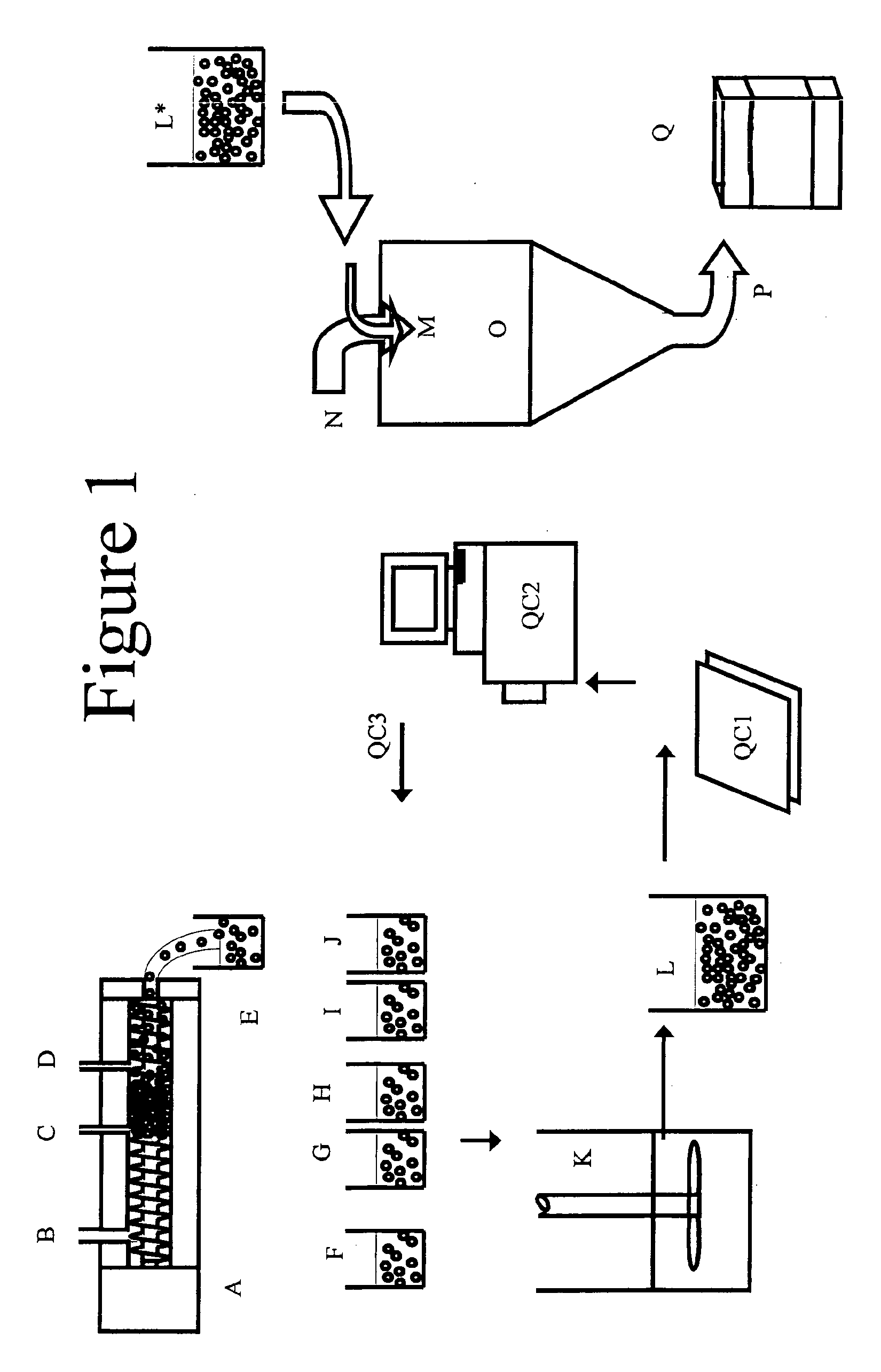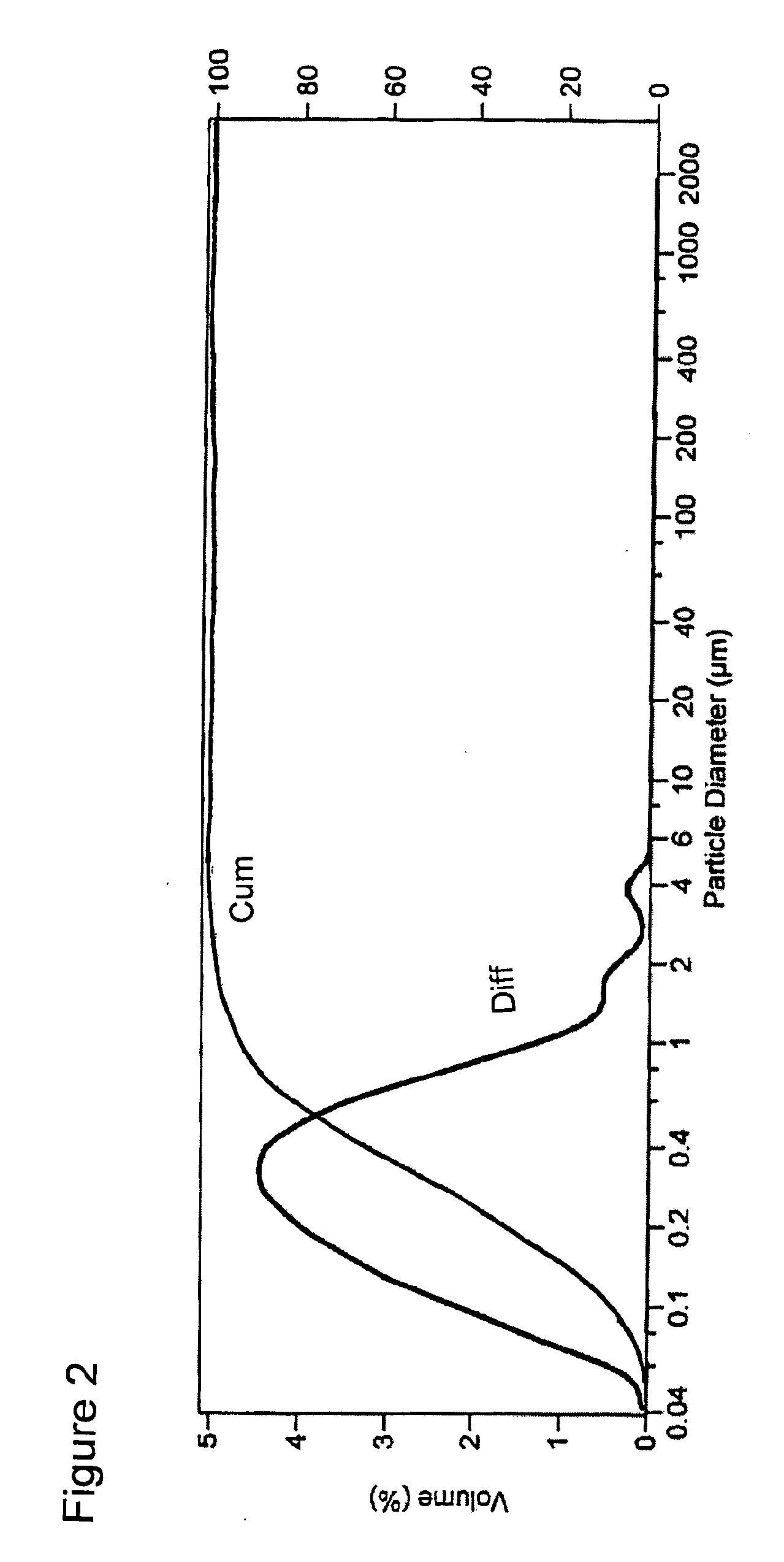Process for preparing a powder coating composition
- Summary
- Abstract
- Description
- Claims
- Application Information
AI Technical Summary
Benefits of technology
Problems solved by technology
Method used
Image
Examples
examples
Test Methods
[0246]Viscosity of the binders described was measured by ISO 53229.
[0247]Particle size was measured for liquid systems using a Coulter LS230 particle sizer and for dry powders using a TSI Aerosizer 3225. All final powder coating compositions had d(v,90) in the 15-75 μm range.
[0248]Particle shape was determined by scanning electron microscopy.
[0249]Colour was measured according to industrial standard ASTM D65, using L, a, b coordinates.
[0250]Starting materials used in the Examples are available as indicated below.
ALBARYT ®Barytes, available from SACHTLEBEN CHEMIE;benzoindegassing agent, commercially available from DSM;Byk ® 190dispersant available from BykByk ® 024defoamer, available from Byk;Byk ® 022defoamer, available from Byk;Byk ® 380levelling agent, available from Byk;Crylcoat ® 150catalyst masterbatch, available from UCB;Heucosin ® Fastblue pigment, available from Heubach;Blue G1737Irganox ® 245antioxidant, available from Ciba-Geigy;Kronos ®titanium dioxide pigment...
example a
Preparation of an Uncoloured Base Composition Containing Polyester Powder Resin
[0252]An aqueous dispersion of an acid functional polyester powder coating resin (acid number 24-26 mg KOH / g, functionality 2.0, Tg 55° C., viscosity 4-4.5 Pa·s at 200° C.) was produced by the phase inversion extrusion process as described in WO 01 / 28306. For this process 1000 grams of the polyester resin was dosed into the intake feed zone of an extruder which was heated to a temperature around 90° C.
[0253]In the first feeding point of the extruder 164 grams of an aqueous solution containing 12.5% by weight of dimethylethanolamine and 90 grams of water were added at a constant rate. Just before the end of the extruder, at a next feeding point, 764 grams of water was added thereby obtaining a white, milk-like dispersion with a solids content of 50 wt. % and a pH of 7.2. The mean size of the spherical-like particles was 136 nm; d(v,90)=197 nm; d(v,50)=130 nm.
example b
Preparation of a White Base Composition Containing Polyester Powder Resin, Crosslinker, Pigment and Other Coating Additives
[0254]A white base composition of a pigmented polyester based powder coating was prepared by feeding 1000 grams of a pre-extruded powder coating composition comprising of the following ingredients: 550 grams of an acid functional polyester resin (acid number 24-26 mg KOH / g, functionality 2.0, Tg 55° C., viscosity 4-4.5 Pa·s at 200° C.), 20 grams Primid® XL552, 375 grams Kronos® 2160, 25 grams barium sulphate, 4 grams benzoin, 8 grams Rheocin® R, 15 grams Perenol® F30 P and 3 grams Irganox® 245 to an extruder which as heated up to a temperature of about 110° C. After cooling down the molten mixture to 90° C., in the first feeding point of the extruder 63.2 grams of an aqueous solution containing 12.5% by weight of dimethylethanolamine and 132 grams of water were added at a constant rate. Just before the end of the extruder, at a next feeding point, 800 grams of w...
PUM
| Property | Measurement | Unit |
|---|---|---|
| Temperature | aaaaa | aaaaa |
| Temperature | aaaaa | aaaaa |
| Temperature | aaaaa | aaaaa |
Abstract
Description
Claims
Application Information
 Login to View More
Login to View More - R&D
- Intellectual Property
- Life Sciences
- Materials
- Tech Scout
- Unparalleled Data Quality
- Higher Quality Content
- 60% Fewer Hallucinations
Browse by: Latest US Patents, China's latest patents, Technical Efficacy Thesaurus, Application Domain, Technology Topic, Popular Technical Reports.
© 2025 PatSnap. All rights reserved.Legal|Privacy policy|Modern Slavery Act Transparency Statement|Sitemap|About US| Contact US: help@patsnap.com



